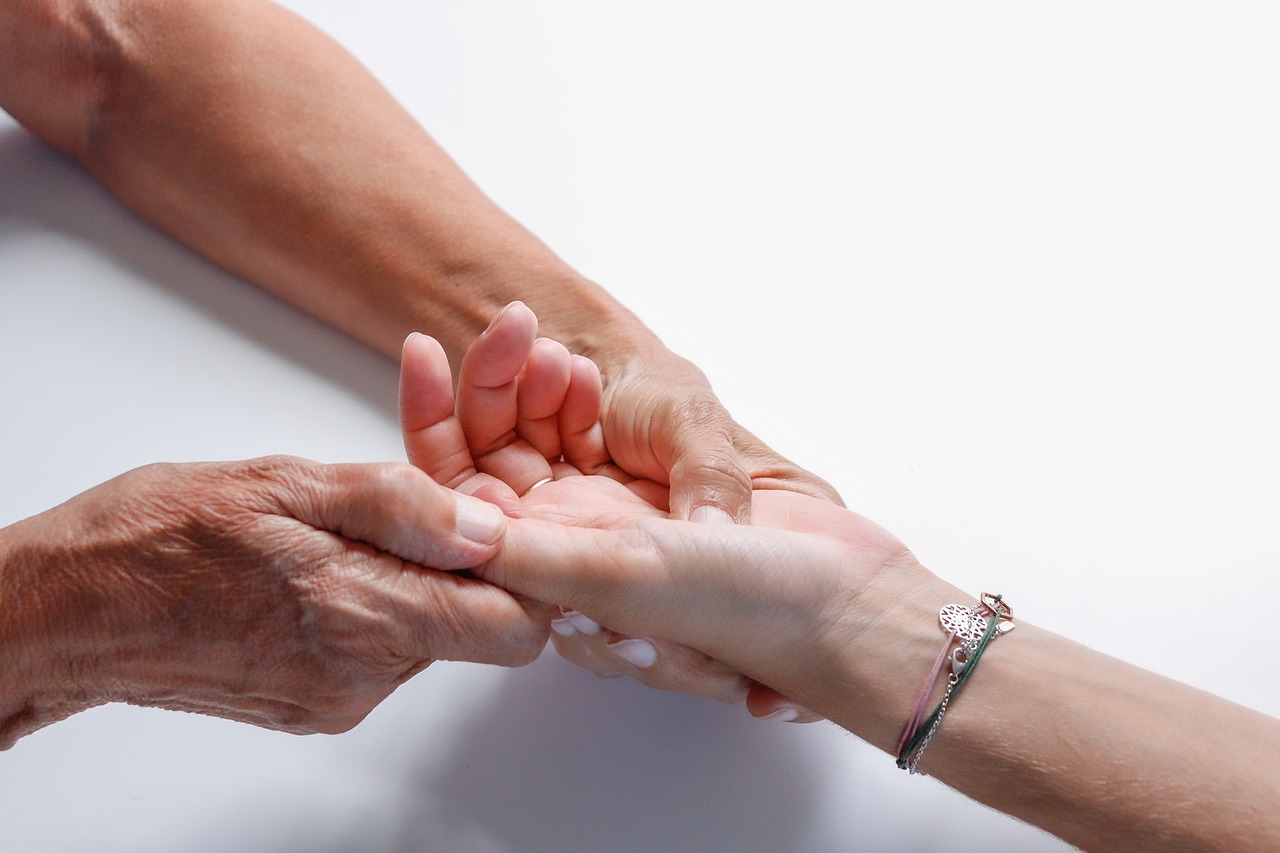This article delves into a variety of Asian massage therapies renowned for their effectiveness in alleviating chronic pain. By examining different techniques, their benefits, and expert recommendations, individuals can make informed decisions on their wellness journeys.
What is Asian Massage Therapy?
Asian massage therapy encompasses a range of traditional practices designed to enhance both physical and mental well-being. These therapies focus on the manipulation of the body’s soft tissues, aiming to improve circulation, relieve tension, and promote relaxation.
Types of Asian Massage Techniques
There are several unique Asian massage techniques, each offering distinct approaches to pain relief. Familiarizing oneself with these methods can assist individuals in selecting the most appropriate therapy for their specific needs.
- Shiatsu Massage
Shiatsu is a Japanese technique that employs finger pressure on specific points to balance energy flow and alleviate tension, making it highly effective for managing chronic pain.
- Benefits of Shiatsu Massage: This method promotes relaxation, enhances circulation, and targets pressure points to reduce pain, contributing to overall well-being.
- Shiatsu Techniques for Chronic Pain: Techniques like kneading and stretching can be customized to address specific pain areas, boosting the therapy’s effectiveness.
- Thai Massage
Thai massage integrates acupressure with yoga-like stretches, fostering flexibility and alleviating muscle tension, making it a favored choice among chronic pain sufferers.
Acupressure: A Holistic Approach
Acupressure involves applying pressure to designated points along the body’s meridians, promoting energy flow and providing relief from chronic pain without the use of needles.
- How Acupressure Works: By stimulating specific acupressure points, this technique can release endorphins, reduce stress, and alleviate pain, serving as an effective complementary therapy.
- Common Acupressure Points for Pain Relief: Key points like LI4 and PC6 can significantly enhance pain relief and improve overall well-being when incorporated into regular self-care routines.
Cupping Therapy: An Ancient Practice
Cupping therapy involves placing suction cups on the skin to enhance blood flow and relieve muscle tension, effectively addressing chronic pain issues.
- Benefits of Cupping Therapy: This therapy aids in reducing inflammation, improving circulation, and relaxing muscles, making it a valuable adjunct for various chronic pain conditions.
- What to Expect During a Cupping Session: Understanding the cupping process, including sensations and potential side effects, can help individuals prepare and maximize the therapy’s benefits.
Choosing the Right Massage Therapist
Selecting a qualified therapist is essential for effective treatment. Factors such as experience, specialization, and personal rapport can significantly influence the overall experience and outcomes.
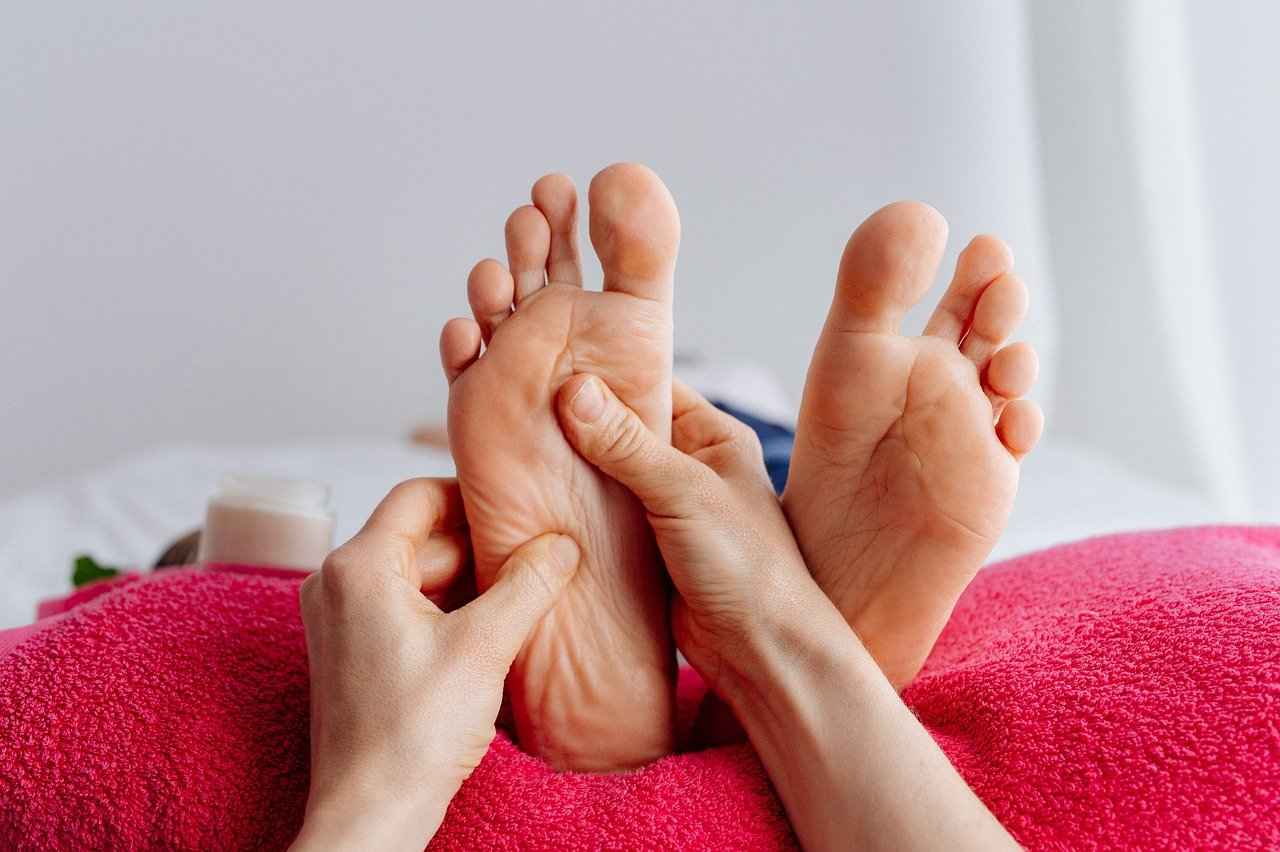
What is Asian Massage Therapy?
Asian massage therapy is a holistic practice that has evolved over centuries, integrating various traditional techniques aimed at enhancing physical and mental well-being. These therapies focus on the manipulation of soft tissues, which includes muscles, tendons, and ligaments, to promote relaxation, improve circulation, and relieve tension. The underlying philosophy of these therapies often emphasizes the balance of energy flow within the body, aligning with ancient beliefs that physical health is intertwined with emotional and spiritual wellness.
One of the key aspects of Asian massage therapy is its ability to address chronic pain through customized techniques tailored to individual needs. Practitioners utilize a variety of methods, each with unique approaches to pain relief. For instance, Shiatsu employs finger pressure on specific points, while Thai massage combines acupressure with yoga-like stretches. These techniques not only alleviate discomfort but also enhance the body’s natural healing processes.
Moreover, Asian massage therapy is not merely about physical manipulation; it also promotes mental clarity and emotional stability. The calming effects of these therapies can reduce stress levels, leading to improved mental health. Research indicates that regular sessions can contribute to increased overall well-being, making these practices valuable for anyone seeking a more balanced lifestyle.
It’s essential to understand that not all Asian massage therapies are the same. Each technique has its own set of benefits and applications, making it crucial for individuals to explore various options. By consulting with experienced therapists, clients can identify the most effective methods for their specific conditions, ensuring a tailored approach to their wellness journey.
In conclusion, Asian massage therapy represents a rich tapestry of healing practices that cater to both physical and mental health. By embracing these ancient techniques, individuals can find effective solutions for chronic pain and enhance their overall quality of life.
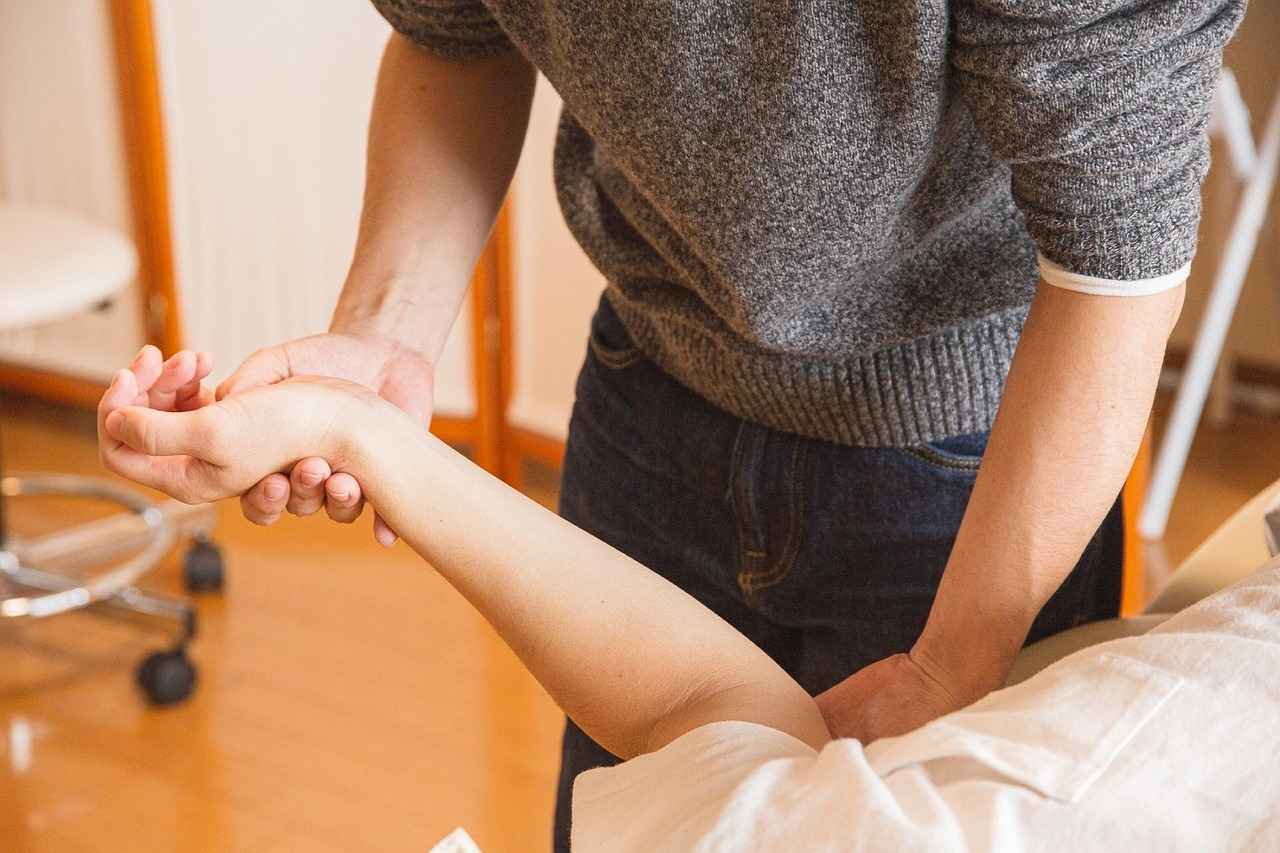
Types of Asian Massage Techniques
Asian massage techniques have gained popularity worldwide for their unique approaches to pain relief and overall wellness. Each method offers distinct benefits and focuses, allowing individuals to select the therapy that best suits their specific needs. This section will delve into various types of Asian massage techniques, highlighting their unique characteristics and therapeutic advantages.
- Soothe Your Body with Shiatsu: Shiatsu is a Japanese massage technique that employs finger pressure on specific points to restore balance and relieve tension. It is particularly effective for those suffering from chronic pain, as it targets energy pathways in the body.
- Experience Flexibility with Thai Massage: Thai massage combines acupressure and yoga-like stretches, promoting flexibility and relieving muscle tension. This technique is ideal for individuals looking to enhance their range of motion while alleviating pain.
- Holistic Healing through Acupressure: Acupressure involves applying pressure to specific points along the body’s meridians, facilitating energy flow and providing relief from chronic pain without the use of needles. This method is known for its ability to release endorphins and reduce stress.
- Revitalize with Cupping Therapy: Cupping therapy utilizes suction cups placed on the skin to promote blood flow and relieve muscle tension. It effectively addresses chronic pain issues and is recognized for its anti-inflammatory benefits.
- Relaxation through Tui Na: Tui Na is a traditional Chinese massage technique that incorporates various hand techniques to stimulate acupressure points. This method not only alleviates pain but also promotes relaxation and overall well-being.
Understanding these diverse Asian massage techniques allows individuals to make informed decisions about their pain management and wellness journeys. Each technique has its own set of benefits, making it essential to consider personal preferences and specific pain conditions when choosing the right therapy.
Shiatsu Massage
is a traditional Japanese technique that emphasizes the use of finger pressure on specific points throughout the body. This practice is rooted in the principles of traditional Chinese medicine, which suggests that the body has a vital energy, or Qi, that flows through meridians. By applying pressure to these key points, Shiatsu aims to restore balance and harmony within the body, promoting overall health and well-being.
One of the primary benefits of Shiatsu is its ability to relieve tension and reduce chronic pain. Many individuals who suffer from conditions such as arthritis, back pain, or migraines find significant relief through regular Shiatsu sessions. The technique not only targets physical discomfort but also addresses emotional stress, making it a holistic approach to wellness.
During a Shiatsu session, practitioners utilize various techniques, including kneading, stretching, and palpation. These methods are tailored to the individual’s specific needs, focusing on areas of tension and pain. For example, gentle stretching can enhance flexibility and mobility, while deeper pressure may be applied to release muscle knots and tightness.
Shiatsu also promotes improved circulation, which is essential for healing and recovery. By enhancing blood flow, the body can deliver more oxygen and nutrients to tissues, aiding in the repair process. Furthermore, Shiatsu has been shown to stimulate the lymphatic system, helping to detoxify the body and boost the immune response.
For those considering Shiatsu as a treatment option, it is essential to consult with a qualified practitioner who understands the nuances of the technique. A personalized approach can significantly enhance the effectiveness of the therapy, ensuring that the treatment aligns with the individual’s health goals and needs.
Benefits of Shiatsu Massage
Spa enthusiasts and wellness seekers alike often turn to Shiatsu massage for its myriad benefits. This traditional Japanese therapy not only promotes relaxation but also serves as an effective method for managing chronic pain.
One of the most significant is its ability to enhance relaxation. By applying pressure to specific points on the body, Shiatsu helps to release tension, allowing the mind and body to unwind. This deep state of relaxation can lead to improved sleep quality and reduced stress levels, which are vital for overall health.
Additionally, Shiatsu is known for its role in improving circulation. The gentle yet firm pressure applied during a session stimulates blood flow, promoting the delivery of oxygen and nutrients to the body’s tissues. Enhanced circulation can lead to faster recovery from injuries and reduced muscle soreness, making it a popular choice among athletes and those recovering from physical exertion.
Another notable advantage is the alleviation of pain. Shiatsu targets specific pressure points associated with various ailments, including back pain, headaches, and joint discomfort. By addressing these points, Shiatsu can effectively relieve pain and improve mobility. Many individuals report significant reductions in chronic pain after regular sessions, highlighting its efficacy as a complementary therapy.
Furthermore, Shiatsu contributes to overall emotional well-being. The therapy not only addresses physical discomfort but also promotes a sense of balance and harmony within the body. This holistic approach can lead to improved mental clarity and emotional stability, making it a valuable addition to any wellness routine.
In summary, the extend far beyond mere relaxation. From enhancing circulation to alleviating pain and improving emotional health, Shiatsu offers a comprehensive approach to wellness. Whether you are seeking relief from chronic pain or simply looking to unwind, this ancient practice can be a transformative experience.
Shiatsu Techniques for Chronic Pain
Shiatsu techniques are an integral part of this traditional Japanese massage therapy, specifically designed to alleviate chronic pain. Among the most effective methods are kneading and stretching, which can be customized to target individual pain points.
Kneading involves rhythmic pressure applied to muscles and soft tissues, which helps to release tension and improve blood circulation. This technique not only alleviates discomfort but also promotes relaxation, allowing the body to restore its natural balance. By focusing on specific areas that are prone to pain, such as the lower back or neck, practitioners can enhance the overall effectiveness of the therapy.
On the other hand, stretching is essential for enhancing flexibility and relieving tightness in muscles. Shiatsu practitioners employ various stretching techniques that mimic yoga poses, which can significantly improve mobility and reduce the risk of injuries. This is particularly beneficial for individuals suffering from chronic pain conditions, as it helps to release built-up tension in the body.
Furthermore, Shiatsu therapists often take a holistic approach, assessing the client’s overall health and specific pain areas. This personalized treatment plan ensures that each session addresses the unique needs of the individual, leading to more effective outcomes. Techniques such as point-specific pressure and dynamic movements can be integrated to further enhance pain relief.
In addition to physical benefits, Shiatsu also promotes mental well-being by reducing stress and anxiety, which are often exacerbating factors for chronic pain. The combination of physical manipulation and mental relaxation creates a comprehensive healing experience.
Overall, the adaptability of Shiatsu techniques, particularly kneading and stretching, makes them a valuable option for those seeking relief from chronic pain. By working with a skilled practitioner, individuals can experience a tailored approach that not only addresses pain but also fosters long-term wellness.
Thai Massage
is a unique and ancient practice that intricately blends elements of acupressure and yoga-like stretches. This holistic approach not only promotes flexibility but also plays a vital role in relieving muscle tension. As a result, Thai massage has become a favored choice among those suffering from chronic pain conditions.
One of the defining features of Thai massage is its use of energy lines, known as Sen lines, which are believed to be pathways through which life energy flows. By applying pressure to these lines, practitioners aim to restore balance and harmony within the body. This method can effectively alleviate discomfort and enhance overall well-being.
Moreover, the incorporation of yoga-like stretches encourages a greater range of motion and flexibility. During a session, clients are gently guided through a series of stretches that mimic yoga postures, allowing for deep muscle relaxation and improved circulation. This dynamic combination not only addresses physical pain but also promotes mental clarity and emotional stability.
For chronic pain sufferers, the benefits of Thai massage extend beyond immediate relief. Regular sessions can lead to long-term improvements in musculoskeletal health, making it a valuable component of a comprehensive pain management strategy. Many clients report reduced reliance on pain medications and an enhanced quality of life after incorporating Thai massage into their wellness routines.
In summary, Thai massage is a powerful therapy that harmonizes acupressure techniques with gentle stretching. By promoting flexibility and alleviating muscle tension, it serves as an effective remedy for those grappling with chronic pain. Whether seeking relief from specific ailments or looking to enhance overall well-being, Thai massage offers a holistic path to improved health.
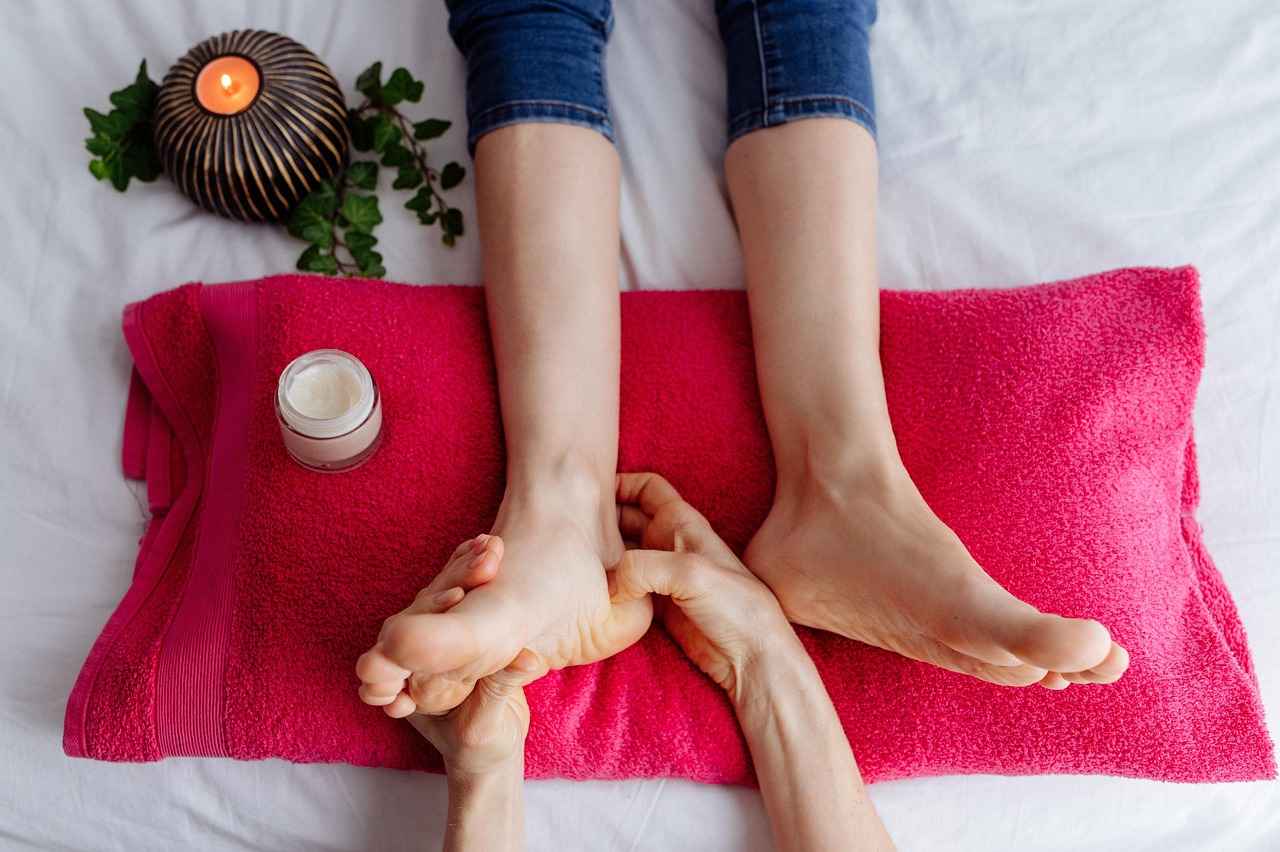
Acupressure: A Holistic Approach
Acupressure is an ancient healing technique rooted in traditional Chinese medicine that focuses on stimulating specific points on the body to promote healing and balance. This practice is based on the belief that energy, or Qi, flows through pathways known as meridians. By applying pressure to these points, acupressure aims to enhance the flow of energy, thereby alleviating various ailments, including chronic pain.
Unlike acupuncture, which employs needles, acupressure utilizes manual pressure, making it a more accessible option for many individuals seeking relief. This technique can be performed by a trained therapist or practiced at home, empowering individuals to take charge of their wellness journey.
The effectiveness of acupressure lies in its ability to stimulate the body’s natural healing processes. When pressure is applied to specific acupressure points, the body responds by releasing endogenous opioids and other neurotransmitters, which can significantly reduce the sensation of pain. Additionally, this practice is known to lower stress levels and promote relaxation, creating a holistic approach to health and well-being.
- LI4 (Hegu): Located between the thumb and index finger, this point is renowned for its ability to alleviate headaches and general pain.
- PC6 (Neiguan): Found on the inner forearm, this point is effective for reducing nausea and relieving tension in the chest.
- GB20 (Fengchi): Positioned at the base of the skull, this point helps relieve neck and shoulder pain.
Incorporating these points into a regular self-care routine can enhance overall well-being and provide significant relief from chronic pain. Whether through professional sessions or self-applied techniques, acupressure offers a versatile and powerful tool for managing pain and improving quality of life.
How Acupressure Works
Acupressure is a time-honored healing technique rooted in traditional Chinese medicine. It involves the application of pressure to specific points on the body, known as acupressure points, which correspond to various organs and systems. This method is not only effective for promoting relaxation but also serves as a powerful tool for alleviating chronic pain.
By stimulating these specific acupressure points, practitioners can trigger the body’s natural healing mechanisms. One of the primary benefits of this technique is its ability to release endorphins, the body’s natural painkillers. These hormones help to reduce pain and create a sense of well-being, which can be particularly beneficial for those suffering from chronic conditions.
Moreover, acupressure is known to significantly reduce stress levels. Stress can exacerbate pain and discomfort, creating a vicious cycle. By applying pressure to the appropriate points, individuals may experience a calming effect that not only alleviates pain but also enhances overall emotional health.
In addition to pain relief and stress reduction, acupressure can improve circulation, which is vital for healing and recovery. Enhanced blood flow ensures that nutrients and oxygen reach the affected areas, promoting faster recovery from injuries and reducing inflammation.
Acupressure is a versatile therapy that can be easily integrated into daily routines. Individuals can learn to apply pressure to key points at home, making it a convenient option for ongoing pain management. Regular practice can lead to cumulative benefits, enhancing both physical and mental well-being.
Overall, acupressure stands out as an effective complementary therapy, providing a holistic approach to pain relief and wellness. By understanding how this technique works, individuals can take proactive steps towards managing their chronic pain and improving their quality of life.
Common Acupressure Points for Pain Relief
Acupressure is a powerful technique that harnesses the body’s natural energy pathways to promote healing and relieve pain. By focusing on specific points, individuals can experience significant improvements in their well-being. Among the most recognized acupressure points are LI4 (Hegu) and PC6 (Neiguan), both of which have been extensively studied for their efficacy in pain management.
LI4 is located between the thumb and index finger. This point is known for its ability to alleviate headaches, toothaches, and general pain throughout the body. By applying firm pressure to LI4, individuals can stimulate the release of endorphins, which are the body’s natural painkillers. This makes LI4 an essential point for anyone seeking relief from chronic discomfort.
PC6, found on the inner forearm, approximately three finger widths from the wrist, is particularly effective for nausea and anxiety relief. However, it also plays a crucial role in managing pain, especially in the chest and abdomen. By incorporating pressure on PC6 into a regular self-care routine, individuals can not only alleviate pain but also enhance their emotional well-being.
To incorporate these acupressure points into daily life, consider the following practical steps:
- Find a comfortable position: Sit or lie down in a quiet space.
- Apply steady pressure: Use your thumb or fingers to press on LI4 and PC6 for 1-3 minutes each.
- Breathe deeply: Focus on your breath to enhance relaxation and effectiveness.
Regularly practicing acupressure at these key points can lead to a noticeable reduction in pain levels and an overall improvement in health. Integrating these techniques into your wellness routine not only empowers you to take control of your pain management but also fosters a deeper connection to your body’s healing capabilities.
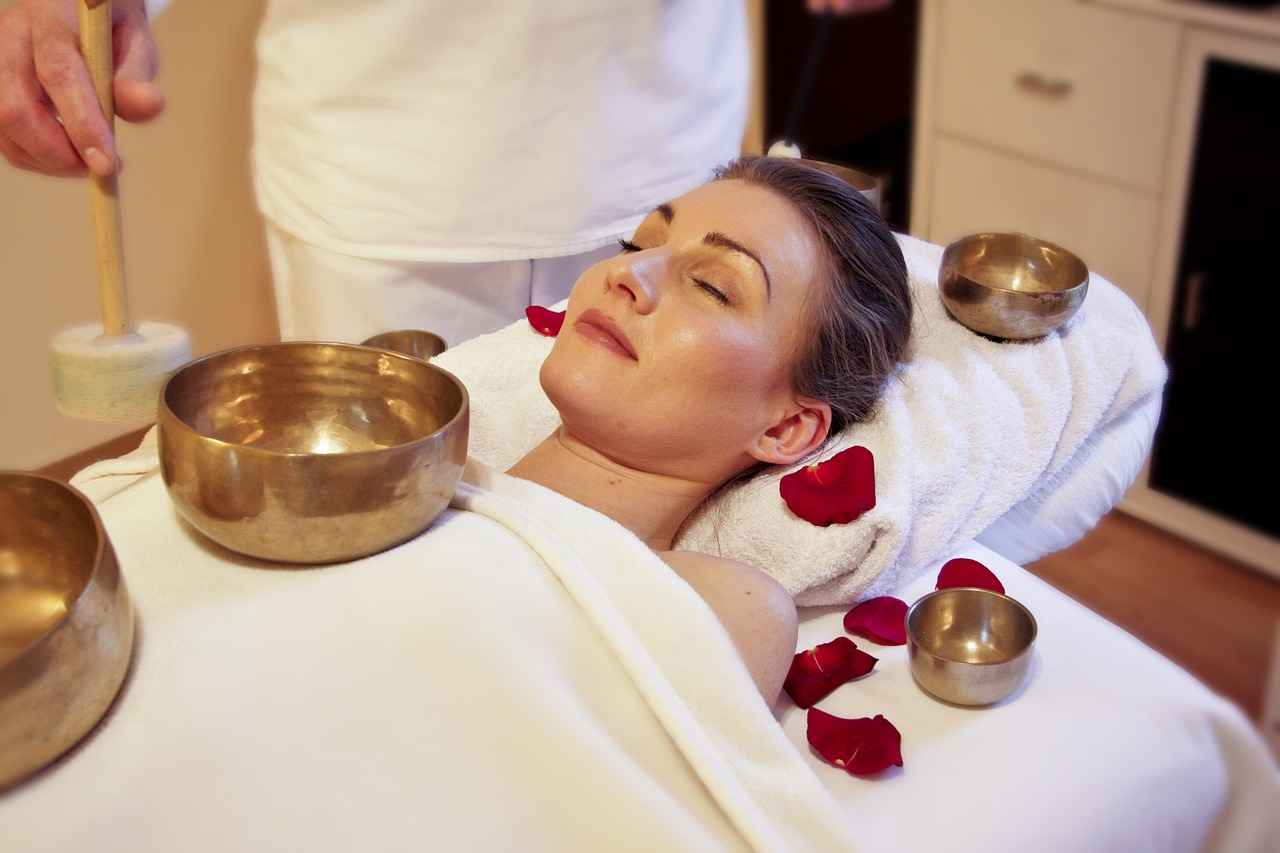
Cupping Therapy: An Ancient Practice
Cupping therapy is an age-old practice that has garnered attention in recent years for its potential to alleviate chronic pain and enhance overall well-being. This therapeutic technique involves the application of suction cups on the skin, creating a vacuum effect that draws the skin and underlying tissues into the cup. The primary goal of cupping is to promote blood flow, reduce muscle tension, and facilitate the body’s natural healing processes.
The mechanism of cupping therapy is relatively simple yet effective. When the suction cups are placed on the skin, they create a negative pressure that helps to increase circulation in the targeted area. This enhanced blood flow can lead to improved oxygen delivery and nutrient absorption in the muscles, which may help in the recovery from injuries and chronic pain conditions.
- Reduces Inflammation: Cupping is believed to help decrease inflammation in the body, which is often a contributing factor to chronic pain.
- Relaxes Muscles: The suction effect can help to relax tight muscles, providing relief from tension and discomfort.
- Enhances Overall Well-being: Many individuals report feeling a sense of relaxation and improved mood following a cupping session.
During a typical cupping session, a trained therapist will place the cups on specific areas of the body, often on the back, shoulders, or legs. The cups may be left in place for several minutes, or the therapist may move them across the skin to enhance the effects. While some individuals may experience mild discomfort, the process is generally well-tolerated. It’s important to note that side effects can include temporary bruising, which typically fades within a few days.
Before trying cupping therapy, it’s advisable to consult with a healthcare provider, especially for those with certain medical conditions or skin sensitivities. By understanding the potential benefits and risks, individuals can make informed decisions about incorporating this ancient practice into their pain management strategies.
Benefits of Cupping Therapy
Cupping therapy, an ancient practice rooted in traditional medicine, has gained popularity in modern wellness circles for its remarkable benefits. This technique involves placing suction cups on the skin to create a vacuum effect, which helps to draw blood to the surface and promote healing. One of the most significant advantages of cupping therapy is its ability to reduce inflammation. By enhancing blood flow to affected areas, cupping can help alleviate swelling and discomfort associated with various chronic pain conditions.
Moreover, cupping therapy is known to improve circulation. The suction created by the cups encourages blood flow, which can aid in the delivery of oxygen and nutrients to tissues. Enhanced circulation not only supports recovery from injuries but also contributes to the overall health of muscles and joints, making it beneficial for individuals suffering from conditions such as arthritis or fibromyalgia.
Another key benefit of cupping therapy is its capacity to relax muscles. The negative pressure created by the cups can relieve tightness and tension, providing a soothing effect that many patients find deeply relaxing. This muscle relaxation can lead to improved flexibility and a greater range of motion, which are crucial for those dealing with chronic pain.
Additionally, cupping therapy can serve as an effective adjunct therapy for various chronic pain conditions. It is often used in conjunction with other treatments, such as physical therapy or acupuncture, to enhance overall effectiveness. The combination of techniques can lead to a more comprehensive approach to pain management, addressing both the symptoms and underlying causes of discomfort.
In summary, cupping therapy offers a multitude of benefits, including reduced inflammation, improved circulation, and muscle relaxation. These advantages make it a valuable option for individuals seeking relief from chronic pain, providing a holistic approach to wellness that is both effective and restorative.
What to Expect During a Cupping Session
Cupping therapy is an ancient practice that has gained popularity in modern wellness circles. Understanding the process of cupping can significantly enhance your experience and the benefits you derive from it. Here, we will explore the sensations you may encounter, the potential side effects, and how to prepare for your session.
During a cupping session, you can expect a series of glass or silicone cups to be placed on your skin. The therapist will create a suction effect by either heating the air inside the cups or using a mechanical pump. This suction pulls your skin slightly into the cup, promoting increased blood flow to the area. Many individuals report a sensation of warmth and a gentle pulling feeling, which can be both relaxing and invigorating.
Common Sensations Experienced
- Warmth: The heat from the cups can bring a soothing sensation, especially in areas of tension.
- Pressure: The suction creates a feeling of pressure on the skin, which may vary from mild to intense depending on the strength of the suction.
- Relaxation: Many find the experience deeply relaxing, often leading to a state of calm and tranquility.
However, it’s essential to be aware of potential side effects. After a cupping session, you may notice:
- Bruising: The suction can cause temporary marks on the skin, similar to bruises, which typically fade within a few days.
- Soreness: Some individuals may experience mild soreness in the cupped areas, akin to the feeling after a deep tissue massage.
- Fatigue: Following the treatment, a sense of fatigue may occur, as your body may take time to adjust to the increased blood flow and relaxation.
To maximize the benefits of cupping therapy, it’s advisable to stay hydrated before and after your session. Communicate openly with your therapist about any discomfort you may feel during the process, as they can adjust the suction strength to suit your comfort level. By understanding what to expect, you can approach your cupping therapy with confidence, enhancing both your experience and its therapeutic outcomes.

Choosing the Right Massage Therapist
Selecting a qualified therapist is essential for achieving effective treatment outcomes. The journey to wellness through massage therapy can be profoundly impacted by various factors, including the therapist’s experience, specialization, and the personal rapport established between the therapist and the client.
Factors to Consider When Choosing a Therapist
- Experience: A therapist with extensive experience in specific techniques or conditions can provide tailored treatment plans that address individual needs.
- Specialization: Different therapists may specialize in various modalities, such as Shiatsu, Thai, or acupressure. Understanding their specialties can help you find the right match for your chronic pain management.
- Personal Rapport: Establishing a comfortable and trusting relationship with your therapist is crucial. A good rapport can enhance communication, leading to more effective treatment.
Researching Potential Therapists
Before making a decision, it is advisable to conduct thorough research. Look for therapists who are licensed and have positive client reviews. Websites, social media platforms, and wellness forums can provide valuable insights into the experiences of others.
Initial Consultation
Scheduling an initial consultation can be beneficial. This meeting allows you to discuss your specific issues, ask questions, and gauge the therapist’s approach. Pay attention to how they listen to your concerns and their willingness to adapt techniques to suit your needs.
Trust Your Instincts
Ultimately, the decision should resonate with your personal comfort and intuition. If a therapist makes you feel at ease and confident in their abilities, it can significantly enhance your overall experience and treatment outcomes.
Frequently Asked Questions
- What is the primary focus of Asian massage therapies?
Asian massage therapies primarily focus on promoting physical and mental well-being through the manipulation of soft tissues, improving circulation, and relieving tension in the body.
- How can Shiatsu massage help with chronic pain?
Shiatsu massage utilizes finger pressure on specific points to balance energy flow, which can significantly alleviate chronic pain by targeting areas of tension and promoting relaxation.
- What should I expect during a cupping therapy session?
During a cupping session, suction cups are placed on your skin, creating a vacuum effect that enhances blood flow. You may experience a warming sensation, and while some bruising can occur, it’s generally safe and effective for muscle tension relief.
- Are there any side effects associated with acupressure?
Acupressure is generally safe, but some individuals might experience mild soreness or bruising at the pressure points. It’s essential to consult with a qualified practitioner to minimize any risks.
- How do I choose the right massage therapist for my needs?
Choosing the right massage therapist involves considering their experience, specialization in specific techniques, and the personal rapport you feel with them. Don’t hesitate to ask questions about their approach and qualifications!
